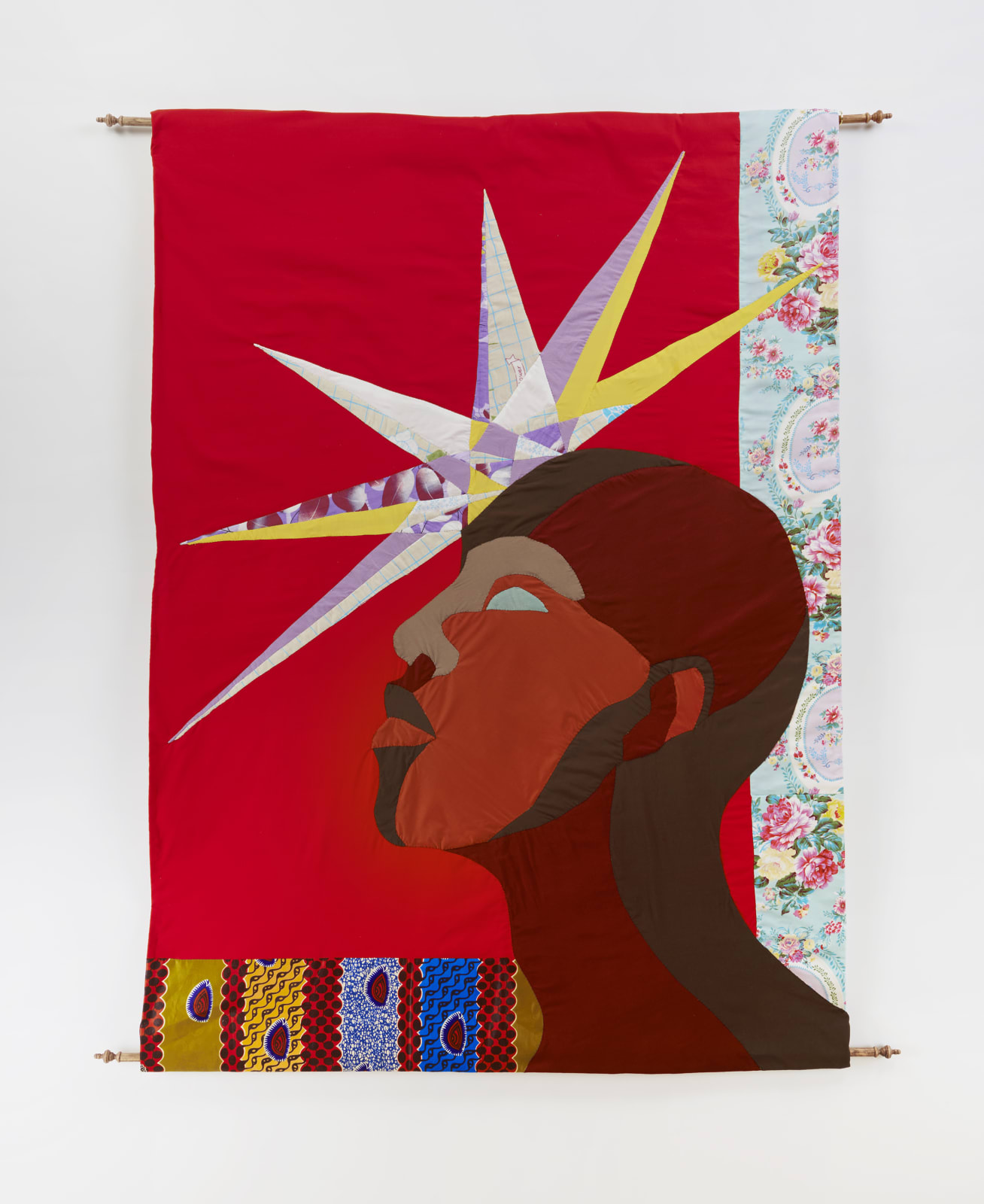-
Artworks



 The morning star personified. Engraving by G.H. Frezza, 1704
The morning star personified. Engraving by G.H. Frezza, 1704
Star of Morning placed itself on his forehead, 2022
Appliqué textile80 1/2 x 58 5/8 in.
204.5 x 148.9 cmSoldFurther images
Mlanjeni was a Xhosa prophet who rallied forces in the 8th Xhosa War in 1850. He preached that should the Xhosa rise against their British oppressors, they would be impervious...Mlanjeni was a Xhosa prophet who rallied forces in the 8th Xhosa War in 1850. He preached that should the Xhosa rise against their British oppressors, they would be impervious to the colonists’ bullets. The ensuing insurrection, which came to be known as Mlanjeni’s War, was the most brutal in the series of nine Xhosa Wars. After two years of conflict, it ended in the complete subjugation of the Xhosa. This bitter defeat laid a fertile ground for the prophecies of the young prophet Nongqawuse only a few years later.
In addition to his prophetic visions, Mlanjeni was rumored to have powers that extended to interpreting and commanding the stars themselves. Here, Myers depicts the prophet with the radiant light of the Morning Star emanating from his forehead, the site of the third eye chakra, which provides perception beyond ordinary sight. In both Classical Greco-Roman mythology and Christian iconography, the Morning Star is personified as a bringer of light. In Biblical scripture, it is understood to represent Jesus and to be something that Christ can bestow upon the worthy as a sign of his blessing. To receive the Morning Star is considered a promise of a glorious future and greater good still to come. Myers positions Mlanjeni as a syncretic nexus of belief, situating European Christianity within a framework of Indigenous cosmovisions.Provenance
Private Collection, NYC1of 2







